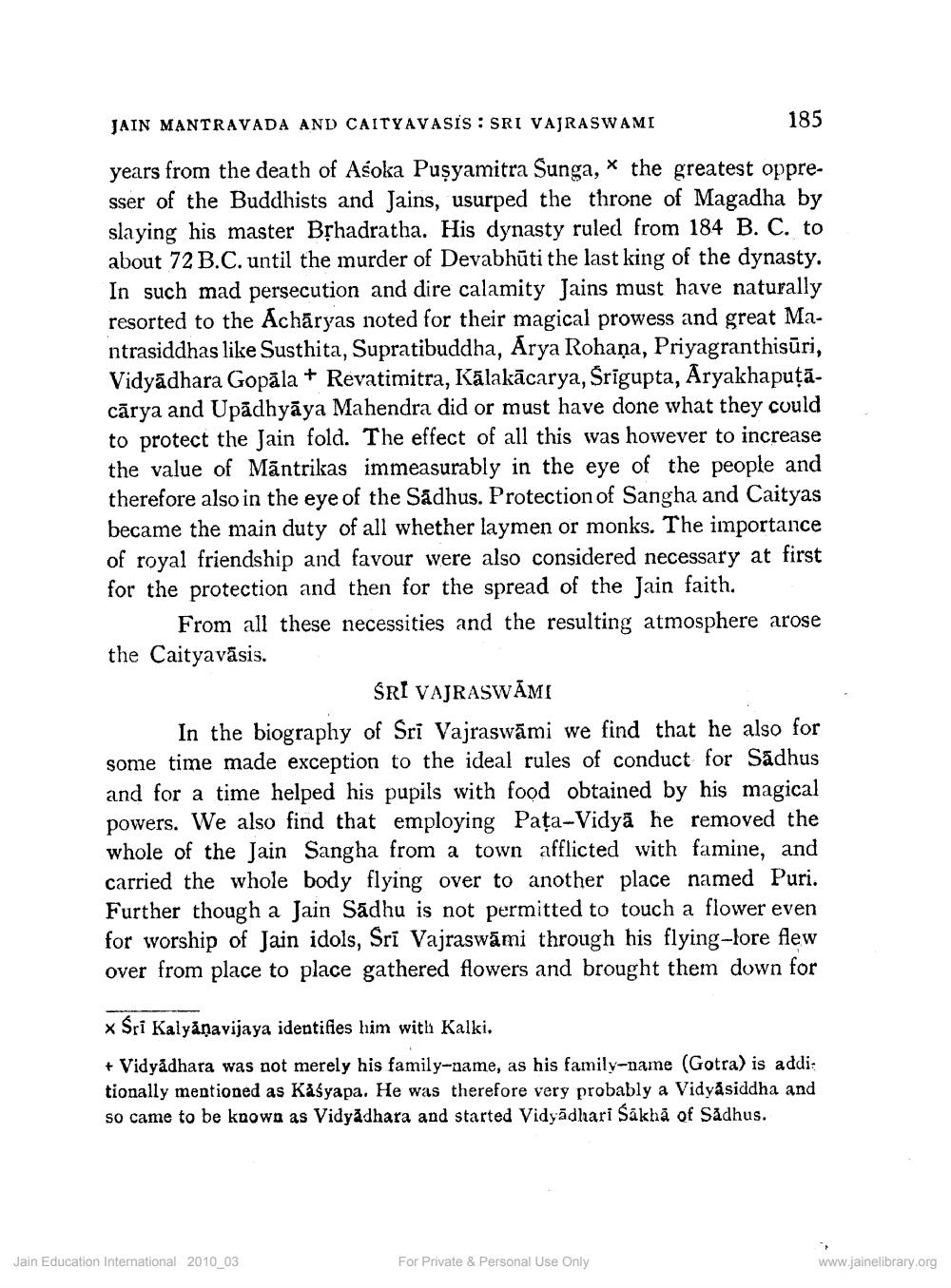________________
JAIN MANTRAVADA AND CAITYAVASIS: SRI VAJRASWAMI
185
years from the death of Asoka Puşyamitra Sunga, * the greatest oppresser of the Buddhists and Jains, usurped the throne of Magadha by slaying his master Bșhadratha. His dynasty ruled from 184 B. C. to about 72 B.C. until the murder of Devabhūti the last king of the dynasty. In such mad persecution and dire calamity Jains must have naturally resorted to the Achāryas noted for their magical prowess and great Mantrasiddhas like Susthita, Supratibuddha, Arya Rohaņa, Priyagranthisūri, Vidyādhara Gopāla + Revatimitra, Kālakācarya, Srigupta, Aryakhapuțācārya and Upadhyāya Mahendra did or must have done what they could to protect the Jain fold. The effect of all this was however to increase the value of Māntrikas immeasurably in the eye of the people and therefore also in the eye of the Sadhus. Protection of Sangha and Caityas became the main duty of all whether laymen or monks. The importance of royal friendship and favour were also considered necessary at first for the protection and then for the spread of the Jain faith.
From all these necessities and the resulting atmosphere arose the Caityavāsis.
SRI VAJRASWĀMI In the biography of Sri Vajraswāmi we find that he also for some time made exception to the ideal rules of conduct for Sadhus and for a time helped his pupils with food obtained by his magical powers. We also find that employing Pața-Vidyā he removed the whole of the Jain Sangha from a town afflicted with famine, and carried the whole body flying over to another place named Puri. Further though a Jain Sadhu is not permitted to touch a flower even for worship of Jain idols, Sri Vajraswāmi through his flying-lore few over from place to place gathered flowers and brought them down for
x Sri Kalyanavijaya identifies him with Kalki.
+ Vidyadhara was not merely his family-name, as his family-name (Gotra) is addi: tionally mentioned as Kåśyapa. He was therefore very probably a Vidyasiddha and so came to be known as Vidyadhara and started Vidyadhari Sakhā of Sadhus.
Jain Education International 2010_03
For Private & Personal Use Only
www.jainelibrary.org




